



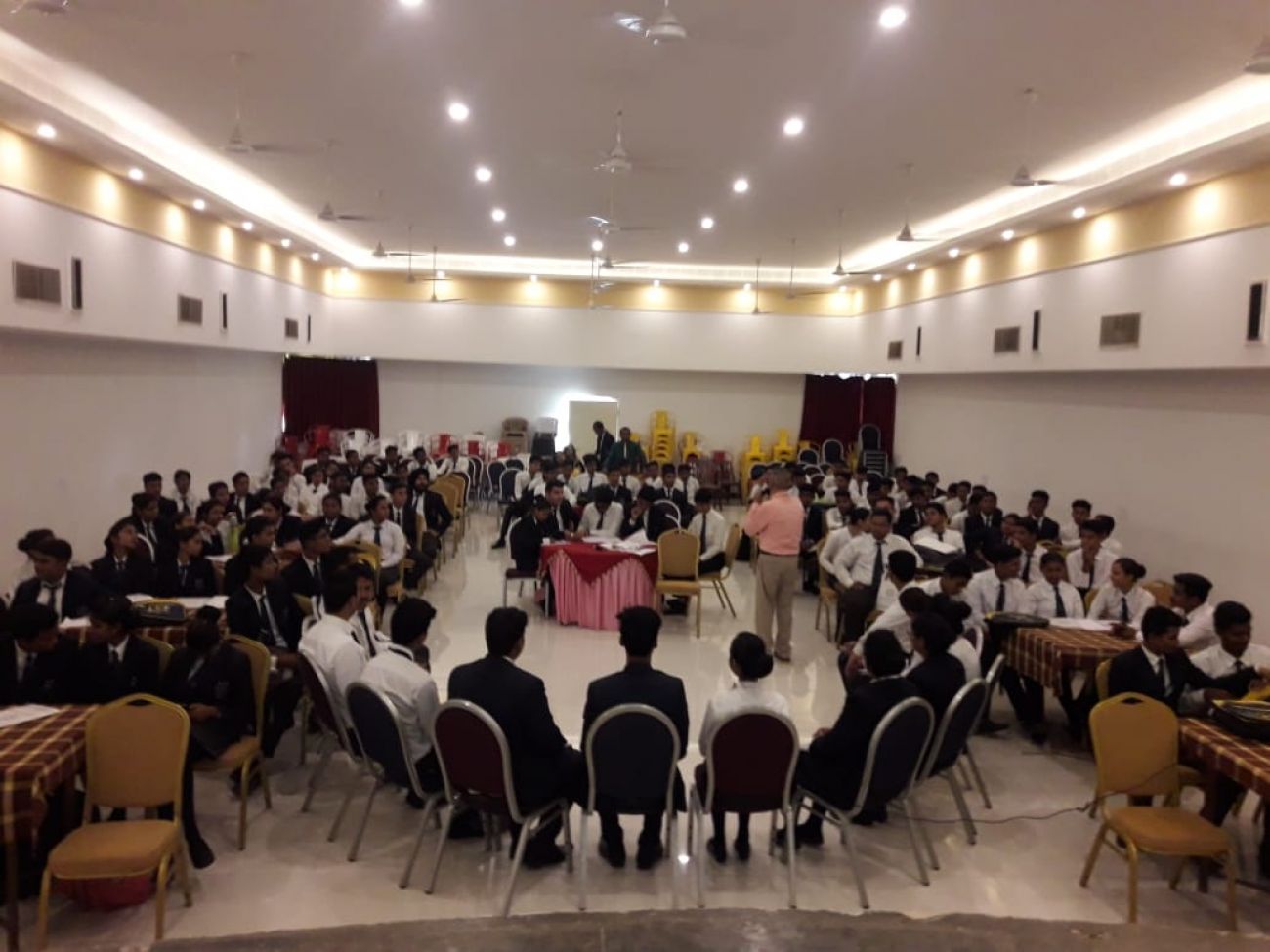
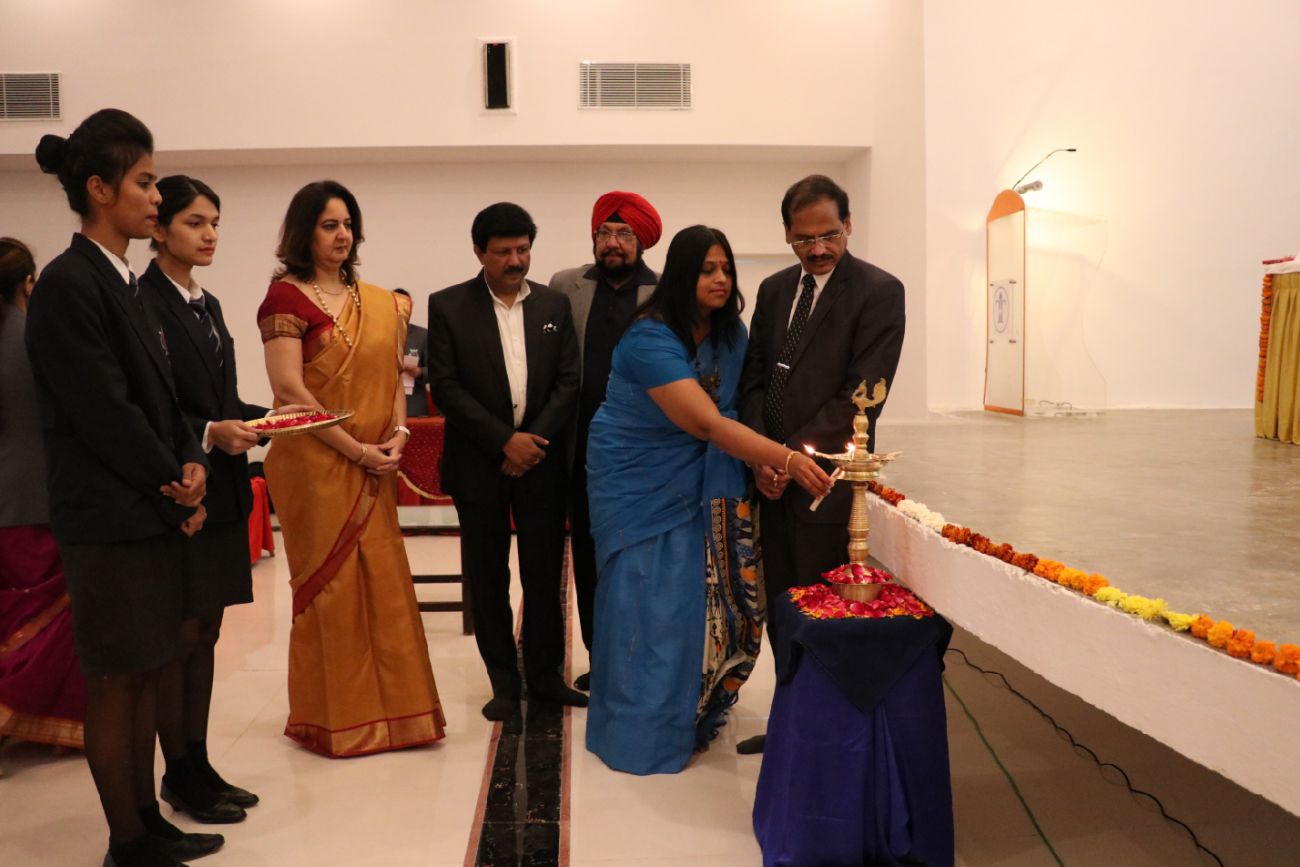
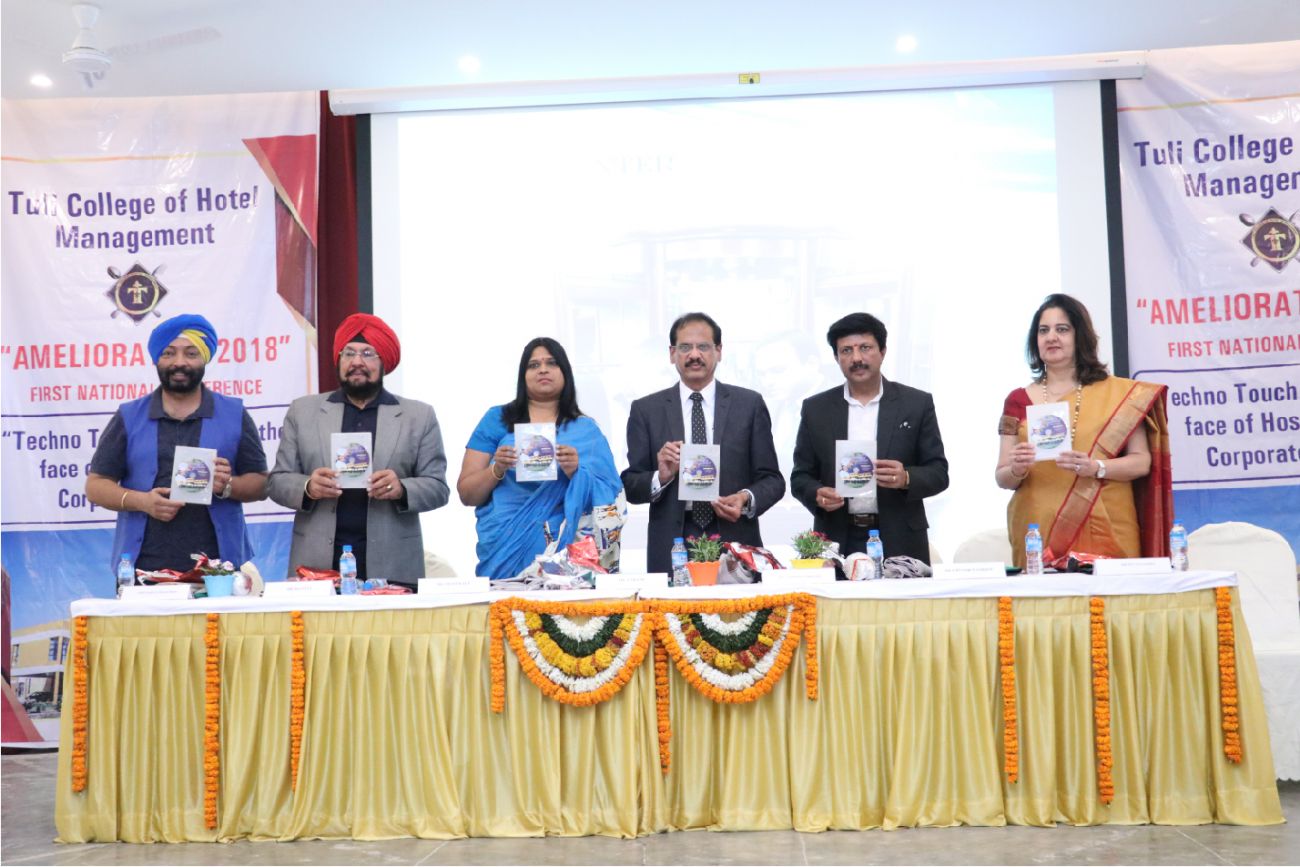
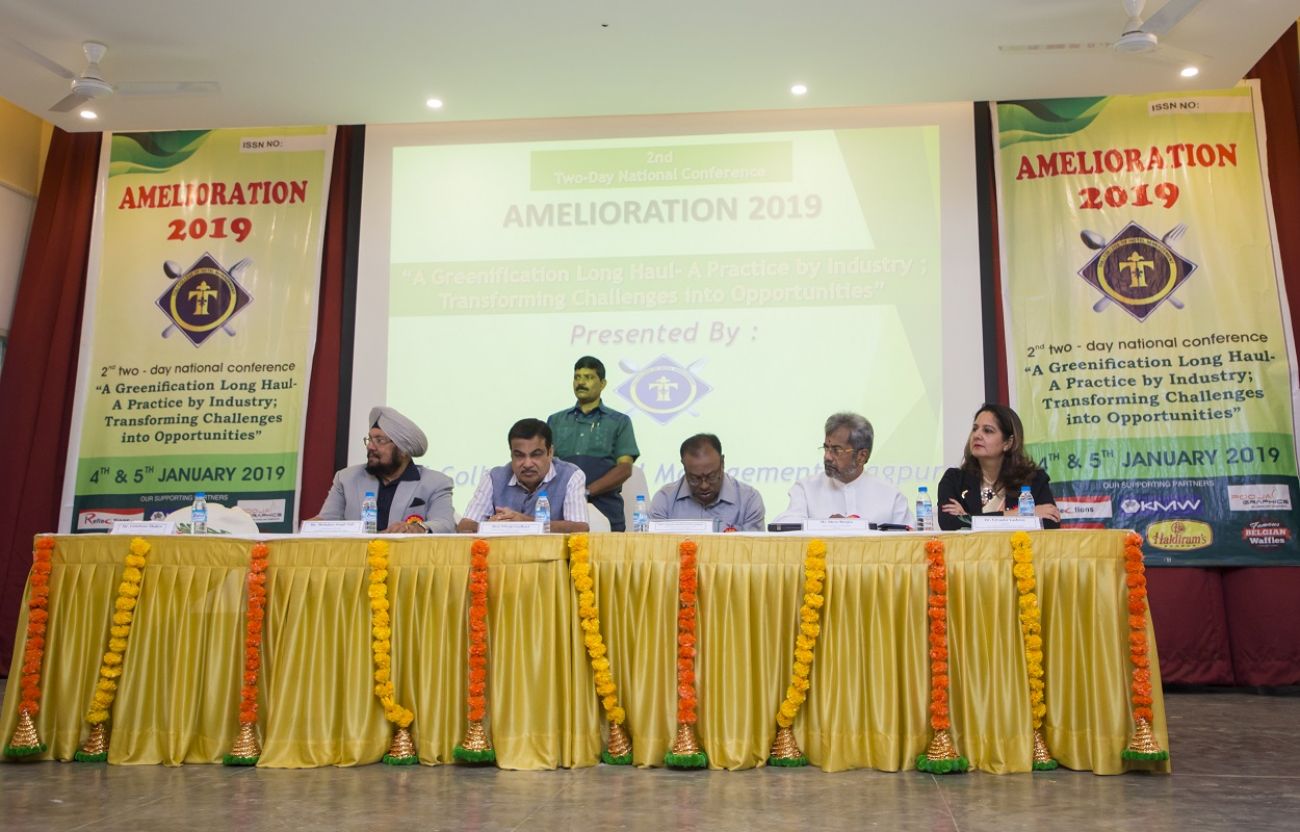
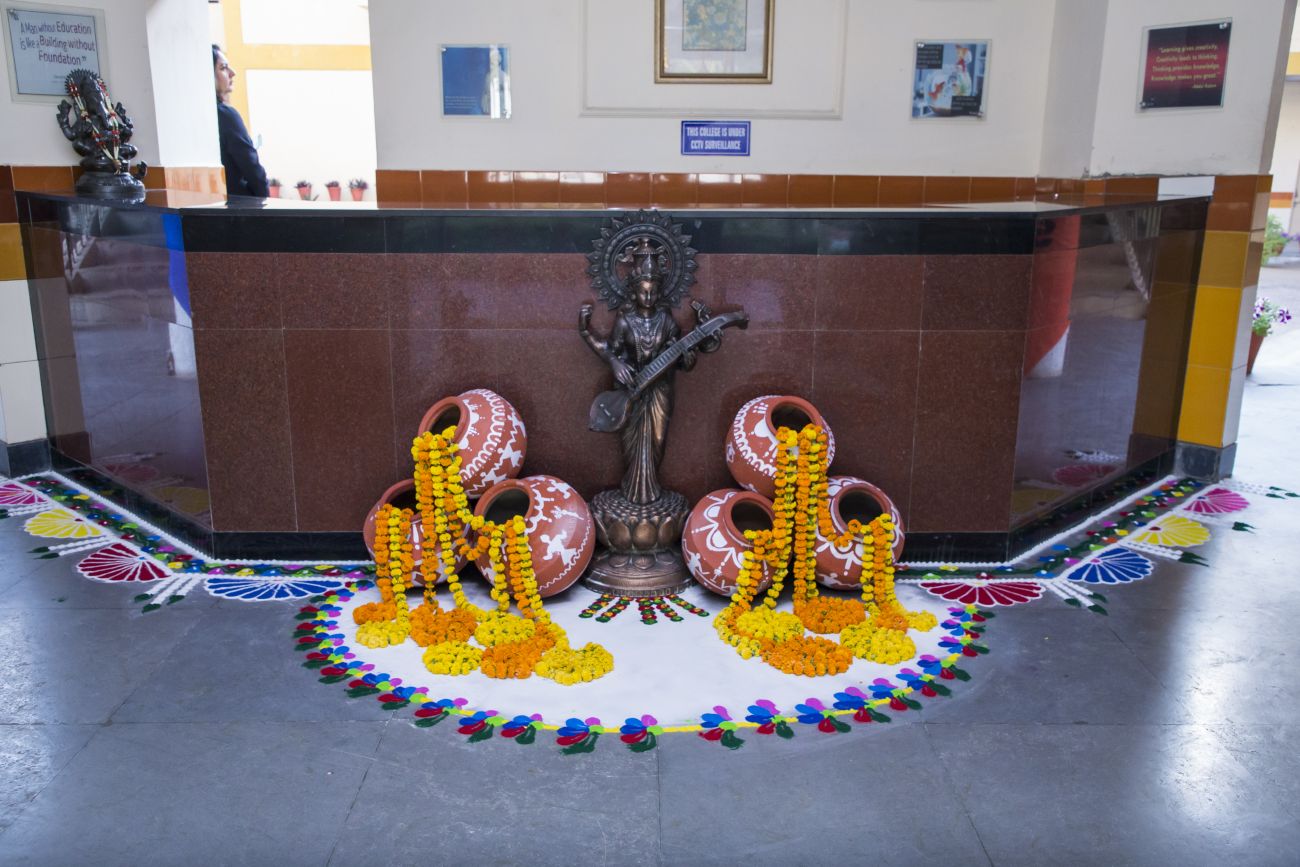
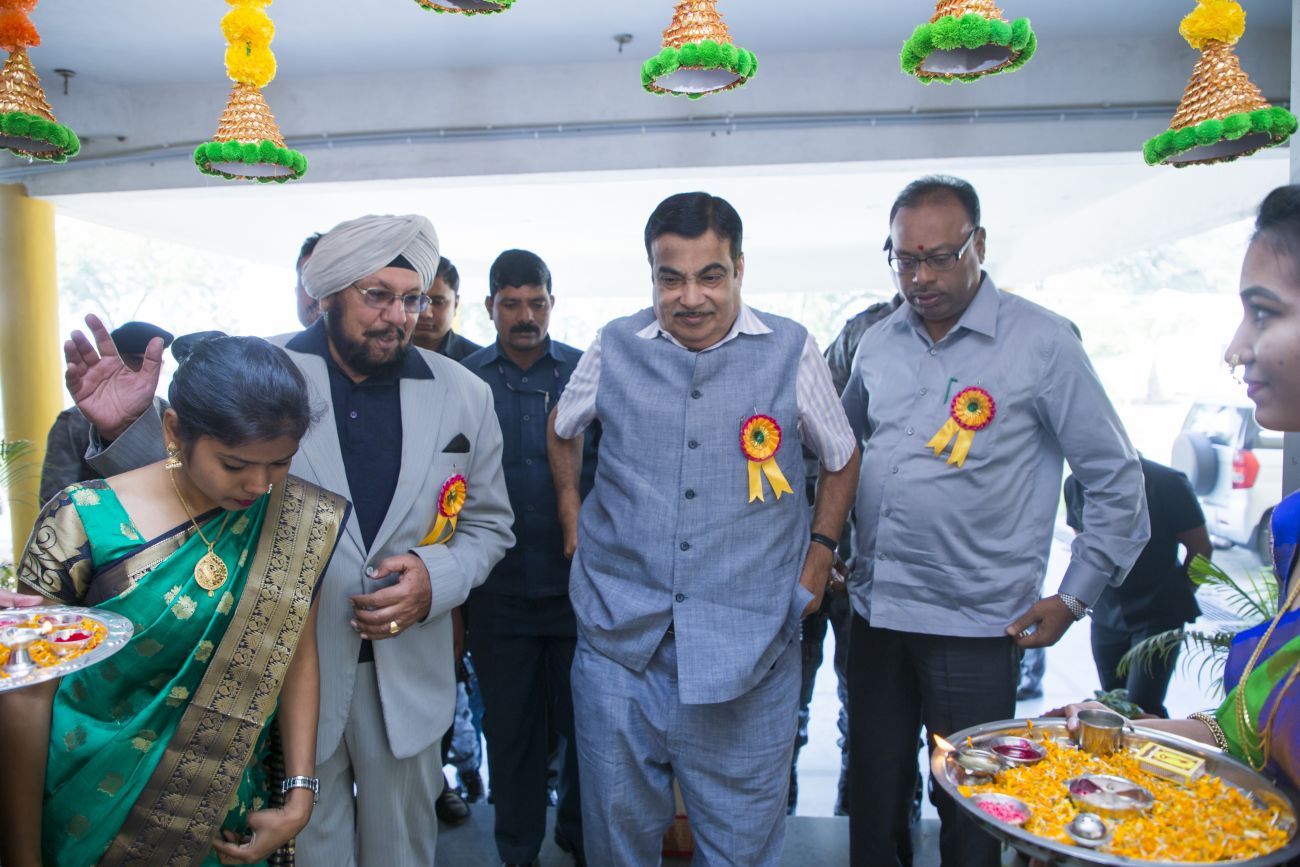
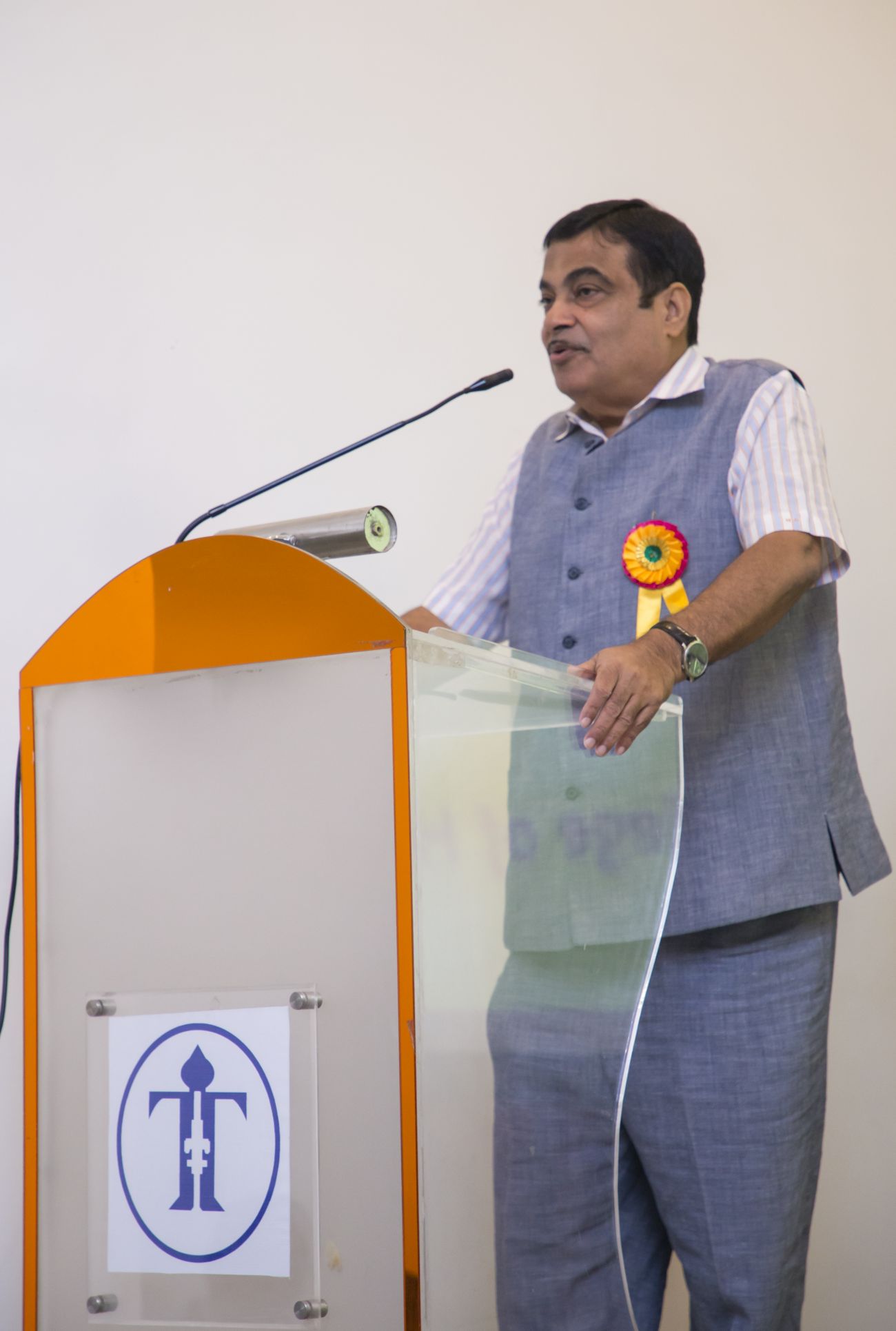
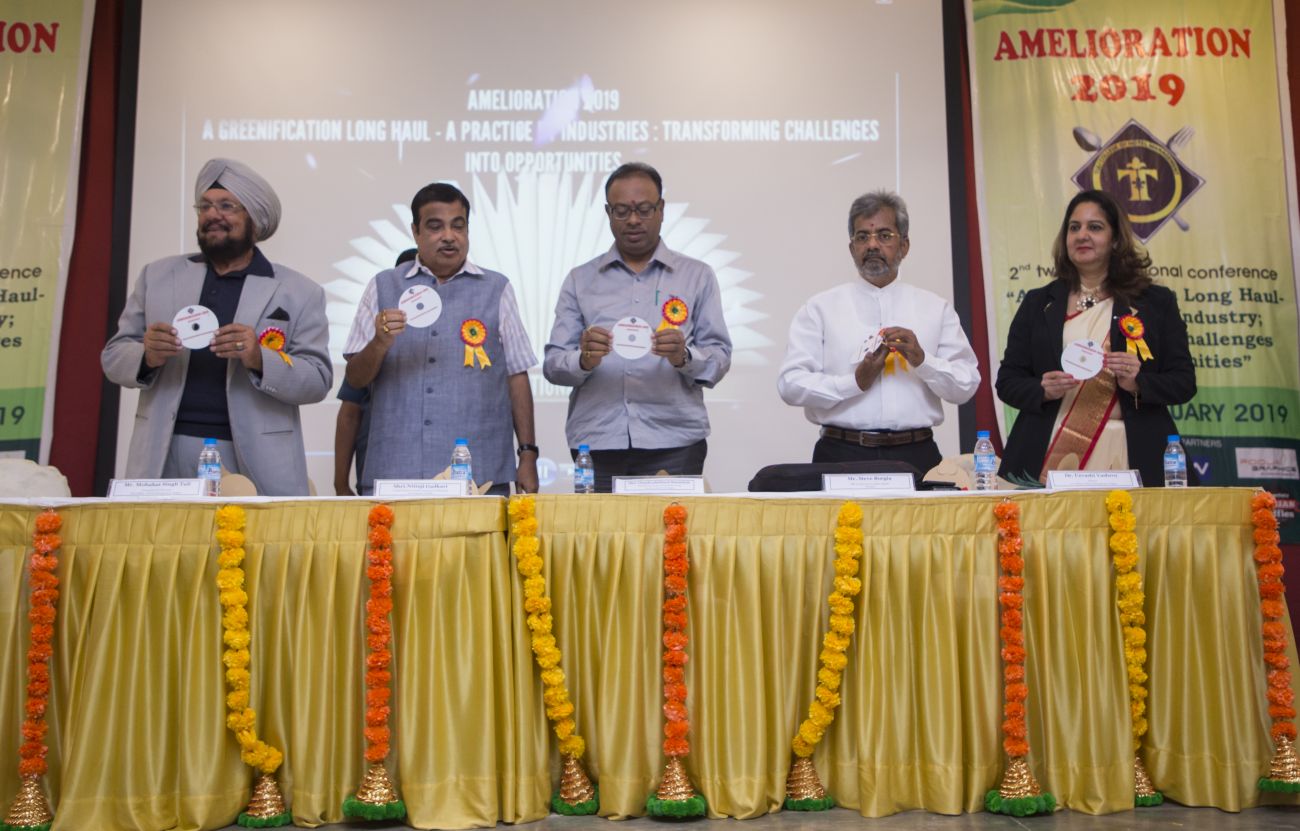
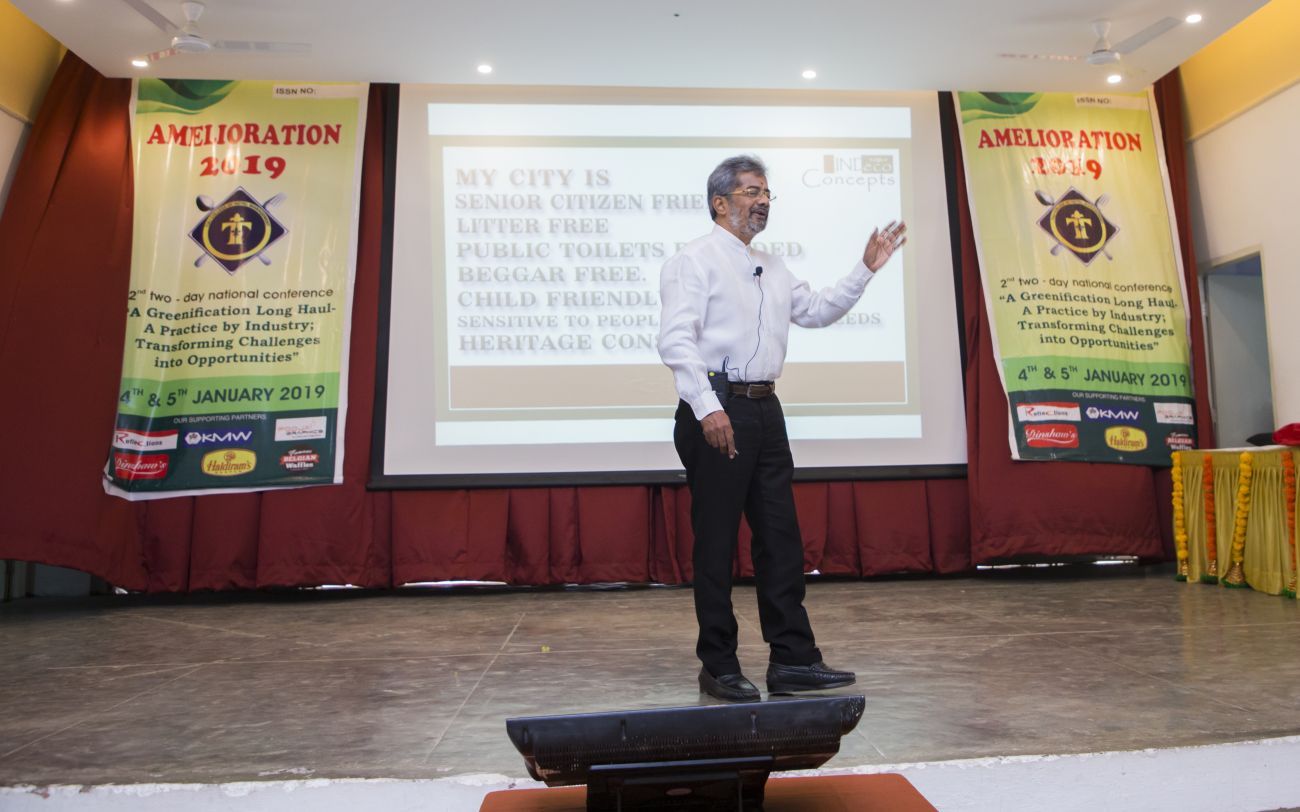
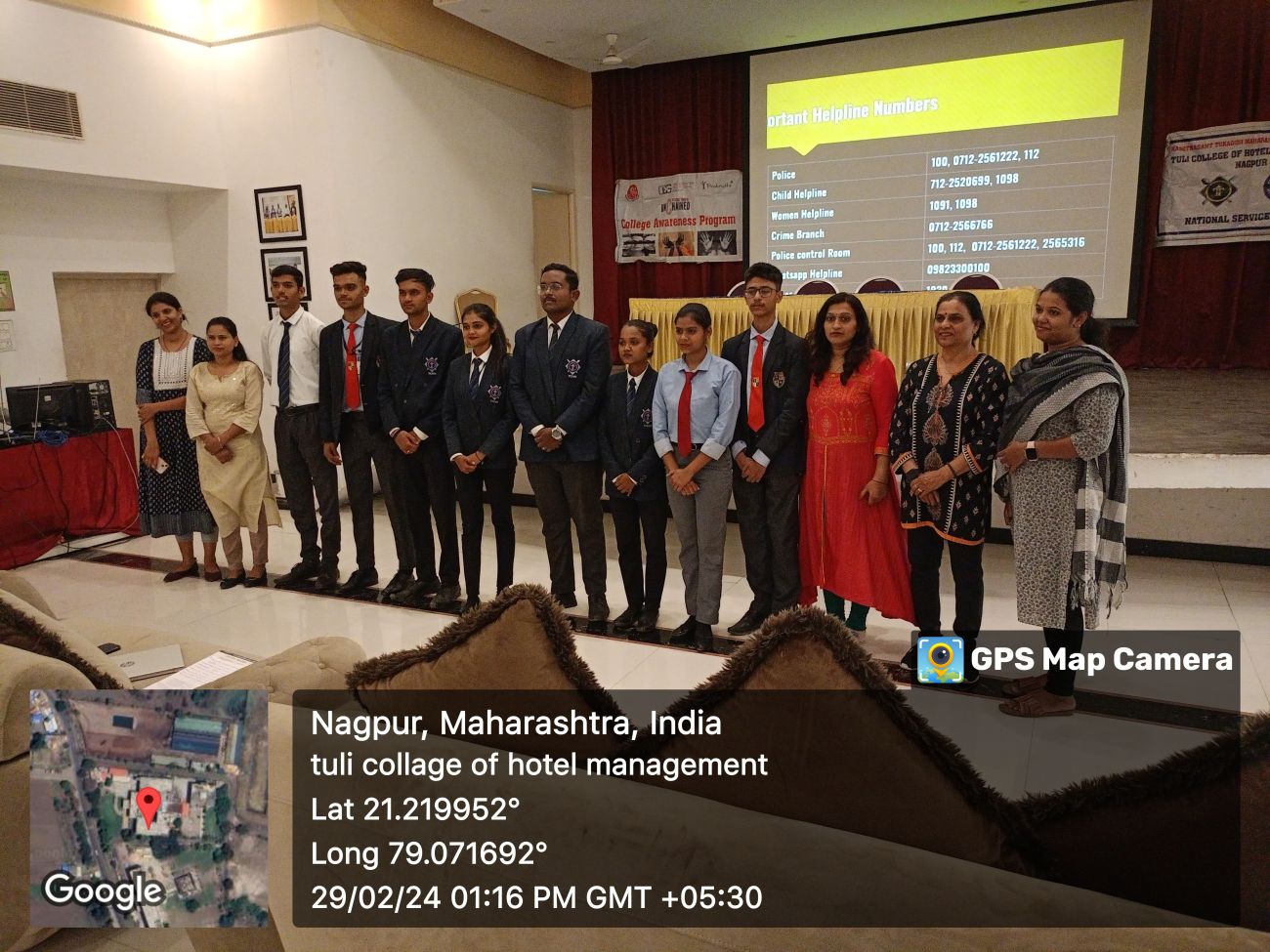
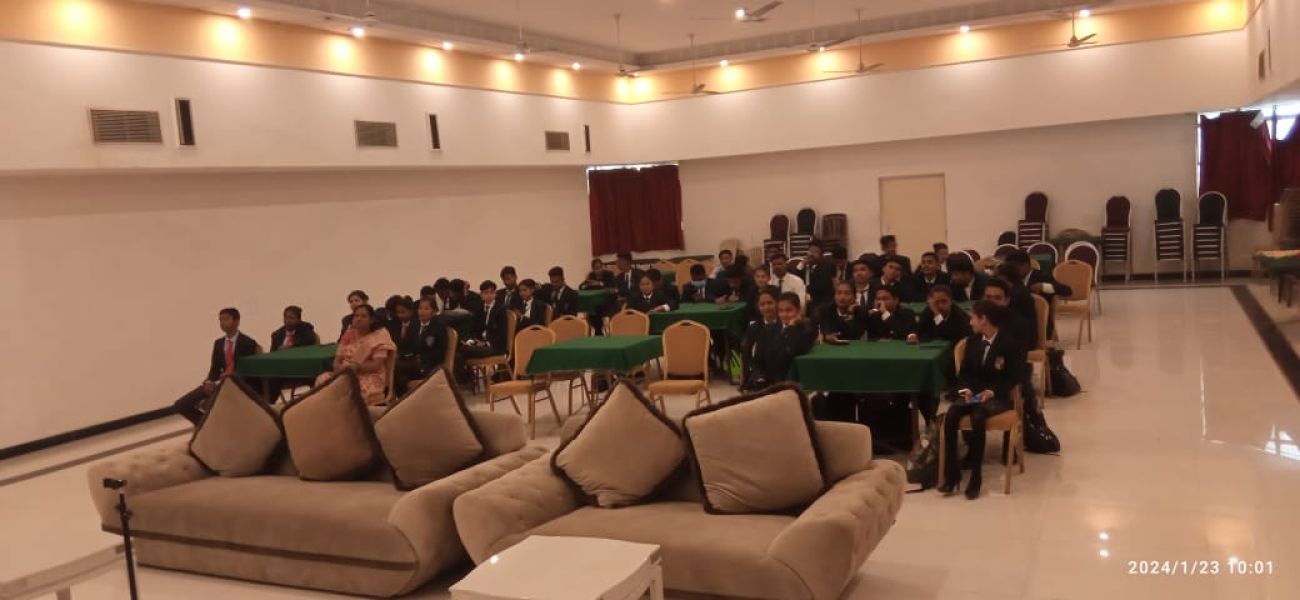
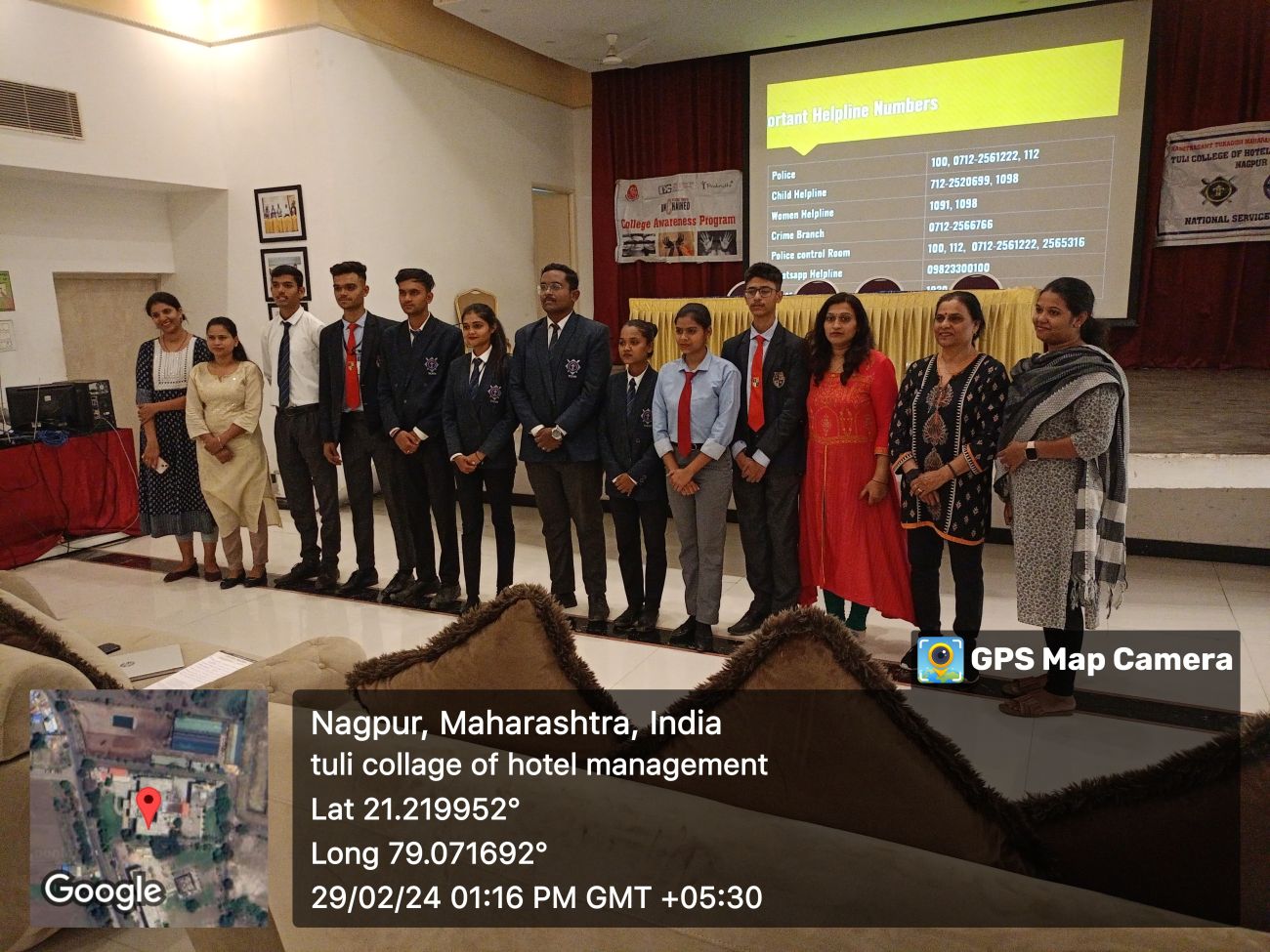
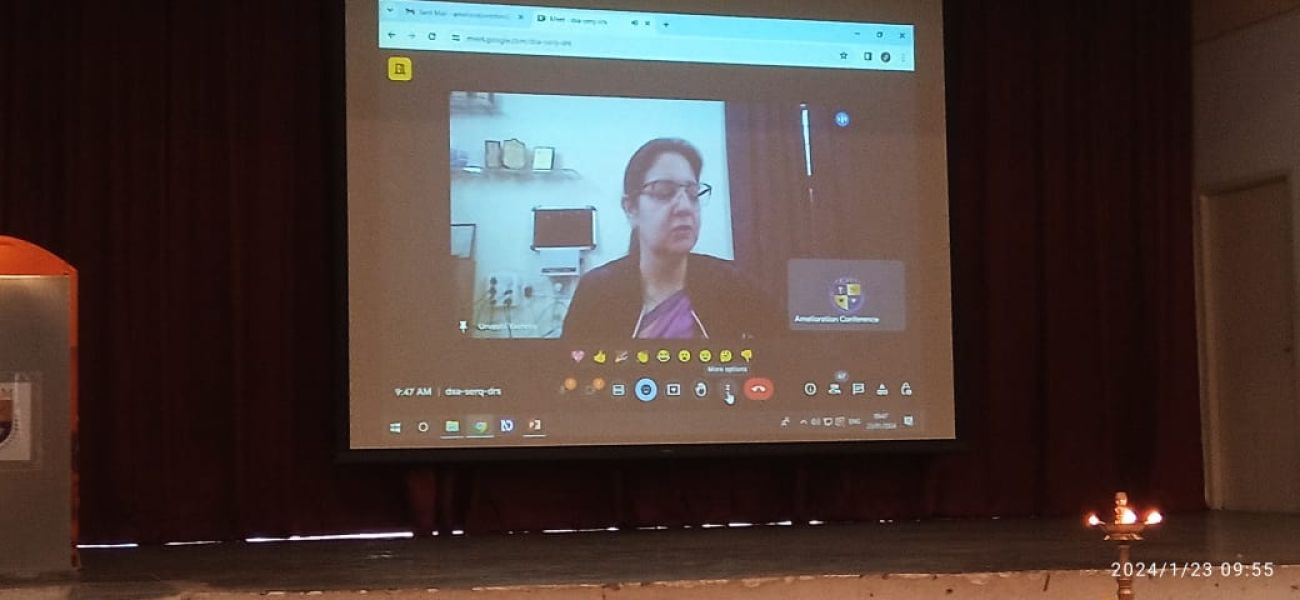
Dr. Urvashi Yashroy
Postal Address:
Tuli College of Hotel Management
Tuli Edu City, Near Koradi Octroi Post, Bokhara Road,
Nagpur – 441 123
Ph. No. - +919422114055
e-mail : urvashiyashroy@gmail.com
Abstract
Tourism is an economic & industrial activity in which many individuals, firms, co-operations, organization & association are engaged & is direct concern to many others. The dynamic growth of Tourism industry in the 1970’s &1980’s is bound to create new demands on the planning & development of the tourism centers & tourism infrastructure facilities.
India’s natural resources are among the richest in the world. Evergreen forest in the northeast and along the Western Ghats, moist and dry deciduous forests, swampy marshes, estuaries and lagoons shelter unique forms of plant and animals life. For a long time, India has been a favourite destination for adventure loving tourist. Each Indian wildlife region has something distinct to offer. There are great diversities of wildlife in their natural habitats. For the right-winger adventure lover, nothing can be more magnetic than Royal India.
Adventure may hold with-in, some secrets to understanding, unlocking & fulfilling human’s potential to experience more than the every day. Adventure is closely related to challenge, stress, coping, difficulty, fear, normative, resilience etc. that needed to explore the world’s top most natural secrets & to go through all the difficulties & secure a memorable moment for lifetime.
Adventure travel means different things to different people. The common denominator for adventure traveller is a willingness to explore, to experience and to see the wonder’s of world from a different perspective. While the adventure seeking, extreme sport practicing, thrill driven person, it is more likely to experience the world at ground level, up close & personal. The adventure traveller spans the spectrum from the backpackers to the luxury hotel, lodge, guest house, from the young in age to the young at heart. Marketing of such activity could be a challenge in itself.
Introduction
The goal of the Adventure Tourism Market report was to gain a better understanding of the size and characteristics of the adventure tourism market. Adventure travel is a sector of tourism increasingly recognized for attracting environmentally and culturally aware consumers and for its focus on responsible and sustainable development, a model designed to create economic opportunities for local people in rural and remote communities worldwide.
In the Adventure Tourism Market Report, adventure tourism primarily represents domestic or international travel featuring physical activity, nature-based travel and cultural experiences. Survey respondents were asked questions about their past three trips and intentions for future trip. Based on their answers, the study categorized their trips as: hard adventure, soft adventure or “other travel.” Activities were categorized into either hard (e.g., climbing, trekking, etc.) or soft (e.g., bird watching, safari, etc.) adventure activities or "other" tourism activities. The study revealed that 26.3% of people taking the survey took hard adventure or soft adventure holidays.
Although adventure tourism means different things to many people, it is generally defined as a type of tourism that engages a person in physical, natural or cultural excursions that bring the individual outside his comfort zone, generally through an established tour company. This broad idea is broken into two major subcategories of adventure tourism: hard adventure and soft adventure. Hard adventure tourism generally involves an element of physical danger or risk, whereas soft adventure tourism simply seeks to explore areas that are not typical for travelers, such as visiting relatively undeveloped destinations.
Generally considered to fall under the category of soft adventure tourism, ecotourism is a form of travel whereby the adventurer explores undeveloped, natural and culturally sensitive areas with a desire to experience it while leaving it intact and unchanged. Ecotourism is done with minimal equipment and accommodations, relying on an ecologically and culturally sensitive approach for procuring food and shelter, such as forgoing established resorts and restaurants in favor of locally owned and sourced alternatives. Although ecotourism is more of a travel philosophy than a destination-oriented undertaking, some popular destinations for ecotourism include the Amazon rainforest, Arctic polar bear viewing, the Costa Rican rainforest and barrier reefs.
Accessible tourism straddles the line between hard and soft adventure tourism, providing excursions for the mobility-challenged that can take the form of cultural exploration and extreme activities such as bungee-jumping or white-water rafting. Accessible tourism is a growing industry that seeks to provide individuals with barriers to mobility a personally rewarding, adrenaline-inducing adventure experience that might otherwise be out of reach. Several companies dedicated to accessible tourism have recently opened, providing those with disabilities a fully personalized adventure tourism package with specialized equipment and training. E.g., Goa having water sports and relaxation at the same time at the beaches.
Thrill tourism is the best known type of hard adventure tourism. Bungee jumping, white-water rafting, mountaineering, parasailing, BASE jumping, rock climbing and spelunking are all popular forms of thrill tourism, but anything that incites an adrenaline rush and a sense of danger applies. This type of adventure tourism is generally done through an established company that provides appropriate safety and training measures, since most thrill tourism activities can be extremely risky Eg white water rafting in Manali. Trekking, Parasailing.
Ethno Tourism
Ethno tourism is a form of soft tourism that brings participants into contact with cultures and diverse people around the globe. Often involving long treks into undeveloped areas, ethno tourism does involve a certain amount of risk, but reputable ethno tourism companies take these considerations into account to ameliorate risk factors such as exposure to disease, social or political upheaval, food safety issues and physical demands. Another consideration when undertaking ethno tourism is the potential for adverse effects on indigenous populations, such as the possibility of exposing them to illness to which they might have no immunity. E.g., Kumbh Mela
Though adventure tourism is acknowledged as a growing niche tourism segment, primary research to quantify the size and scope of this market in the U.S. or internationally has been lacking. The study focused on previous (actual) and anticipated (intended) travel behavior, as well as psychographic and demographic information. The GWU (George Washington Univ)/ATTA(adventure tourism trade studies)/Xola (tourism consultancy agency)report provides a detailed examination of adventure travelers in these three areas, including: number of travelers, spending and a snapshot of predicted future trends.
Information available in the ATTA is expected to aid the adventure travel industry, destinations looking to build or enhance their adventure offerings and adventure tourism operators seeking to better understand their target market.
For destinations, tour operators and gear, apparel and accessories manufacturers and retailers, these new trade and consumer findings indicate the independent adventure traveler is an underserved, dynamic, growing and innovative market. Although many people are engaging in adventure activities while on vacation, they may not fully be aware of the value tour operators and guides, and also specialty gear brands and retailers, bring to the holiday equation.
Objectives
Methodology
A case study encompassing the tourism product with adventure centric approach was developed and put into action by a very prominent hospitality chain in Nagpur. The concept is to provide the luxurious and relaxing environment to the thrill loving tourist of the world. The day long thrill activity to be followed by a peaceful yet modern and comfortable stay. The wildlife tourism is gaining pace in areas which have enough forests to offer the wild life. The hospitality industry is encashing on India’s rich forest reserves by offering value added services in terms of luxurious stay, adventure activities, rejuvenation centre and sports.
The resort plans to sell villas for the ones who would want to invest in a weekend home away from the hustle and bustle of the city life and spend time in peaceful surroundings.
The Resort is located in Pench Maharashtra area known popularly for Tiger Tourism. Vidarbha is a corridor for wild life tourism, with major wildlife sanctuaries around it namely Pench national Park, Tadoba Andhari tiger reserve Navegaon Nagzira wild life parks etc. Nagpur city has lately been labeled as Waghpur. Considering the potential of the area, an ideal resort hosting the facility for monitored adventure sports will be developed
Resort will be located on lease hold plot of 20 Acres near Pench Forests of M. P. & Maharashtra in a village named as BANDRA. The best village in Maharashtra which bagged a prize of Second best village in Maharashtra state last year. Just one K.M. from National Highway No.7 Besides adventure activities, the following facilities would be available at proposed Resort
Reasons Favouring the construction of this resort:
The resort is being prepared keeping in mind to provide eco tourism with eco friendly resources being used in running the resort such as fuel generation, solar energy consumption, organic farming, and windmill installation etc. The viewing of area around the resort, which is a dense forest, through a hot air balloon, Jungle Safari, Night Safari, Amusement Park for kids and adults, Horse Riding, Gondola rides in the canal that flows through the entire jungle side of the property, Golf Course, Bungee jumping ,Rainforest treks, Parasailing, Gliding, Rappelling Village Carts, Pottery, Tracking Mobikes, fishing etc
Marketing strategy
Marketing strategies may differ depending on the unique situation of the individual business. However there are a number of ways of categorizing some generic strategies. A brief description of the most common categorizing schemes is presented below:
ANALYSIS
VALUE CHAIN ANALYSIS IN TOURISM INDUSTRY
Value chain analysis describes the full range of activities which are required to bring a product or service form conception through the different phases of production, (involving a combination of physical transformation and the input of the various service providers) delivery to the final consumers, including all process that added value to the process
Value chain analysis focuses on the nature of the relationships among the various actors involved in the chain and their contribution towards the value addition of a service. The fragmented nature of the tourism industry requires the co-ordination and collaboration of the different stakeholders in tourism planning. The typical value chain of tourism is the combination of the services that contribute to the delivery of the tourism product.

However, the value chain of tourism business starts from the activity of identifying the customer, presenting him the attractiveness of the destination, arranging for his stay, travel and other reservation. Generally the tourism value chain can be integrated into five productive activities or segments.
The structure of a tourism value chain includes all the firms in the chain which can be characterized in terms of the following elements:
End market opportunities: the demand in the end market defined the characteristics of a successful marketing of the product. Each firm in the value chain has to develop a framework taking into consideration the tourist in general and destination in particular.
Vertical Linkages between firms at different levels of the value chain- these are critical for moving a product or service to the end market and for transferring benefits and services between firms up and down the chain. For instance a travel agent while advising the tourist on a particular destination has to be well informed with the prevailing rules and regulation of the destination.
Horizontal Linkages between firms at the same level of the value chain- these can reduce transaction costs, enable economies of scale increase bargaining power, and facilitate the creation of industry standard and marketing campaigns.
Supporting markets-these include financial services, cross-cutting services (e.g., business consulting, insurance, telecommunications) and sector- specific services (e.g., design services for handicrafts).
Business and enabling environment: This includes law, regulations, policies, international trade agreements and public infrastructure (roads, electricity, etc.) that enable the tourist product to move through the value chain.
Merits:
Innovativeness in ideas can attract tourist.
Attractive marketing packages can be a key to foreign tourist interest’s generation.
Inflow of foreign currency
Employment generation for local tribes with enhanced skill training
Growth of domestic tourism.[especially relating to the case study, Vidarbha will get a tourist destination with adventure sports attraction and govt will get the chance to project the viability of the Pench forest reserve]
More proactive role of the govt in framing the policies for use of adventure sports.
Scope for Hospitality Industry to grow in tribal areas
Innovation in marketing strategies
Demerits
Lack of adequate infrastructure
A xenophobic attitude of certain section of people
No proper marketing of India as an adventure tourism destination
The tendency of acquiring sub standard material at lower cost may bring in risk of major hazards.
Tourism sector lacks Govt attention for development of tourism as an ever growing industry.
Conclusion
No doubt tourism in India has tremendous scope for growth and development. Adventure tourism has not been much in focus hence it needs proper marketing and safe conducting of the activity.
A marketing mix of strategies aiming solely on the adventure activity would not be suitable for a tourist who would travel out for vacation. The package should include all facility of hospitality clubbed with adventure, sightseeing, luxurious accommodation, good food and a revitalizing environment. The USP of the venture should be adventure activity and the marketing strategy should be designed to create a niche amongst the emerging forms of tourism. Besides Hard Tourism there should be scope for lighter activities and relaxing spa s, reinvigorating centres, family recreation and holistic healing centres.
The resort should be marketed for all value added facilities or should be known as one stop shop for thrill, rejuvenation, entertainment and relaxation
As per the case study, the resort could be promoted as hot spot for adventurists as the location is congenial for the activities mentioned and is not far from the city life of Nagpur. It could be promoted as only destination or a weekend getaway giving up hill thrill and exhilaration. Gift wrapped packages could be floated in the market for all occasions in and around Nagpur.
Suggestions
If the services for the adventure activity are clubbed with luxurious living, is wrapped professionaly, attractive enough for the tourist, it certainly gets buyers. The adventure sports should be conducted by trained personal, under strict supervision of life guards. The resort should invest in good quality and appropriate gear for the activities. The standardized equipment and grounds should be made available for the interested thrill seeking tourist. A warning of life risk to be displayed and the thrill seeking tourist should be made aware of the probable hazards involved. Arrangements for emergencies should be a call away. The tourist should feel the confidence in the resorts capability to handle the activity well. Regular updating and training of the involved staff should be provided. Regular maintenance of the equipment used in such activity.
Besides this the resort can actually continue to add on facilities that can motivate the guest to venture out in such sports as a kick giving experience. Local people to be trained for such activity as employment generation for the villagers is the corporate social responsibility of the industrial development
Market executives should focus on the USP of the resort i.e the adventure sports activity being conducted in the vicinity of Nagpur. “Get a Kick of Life While You Chill with us” punch line while fetch many thrill seekers to the resort. A Marketing strategy with a mix of market dominance and innovation based model will work ideally in this situation.
Bibliography: